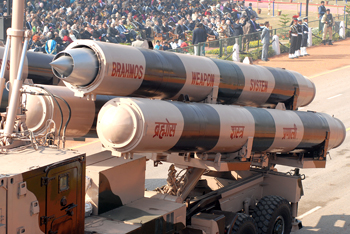INDIAN ARMED FORCES CHIEFS ON
OUR RELENTLESS AND FOCUSED PUBLISHING EFFORTS

SP Guide Publications puts forth a well compiled articulation of issues, pursuits and accomplishments of the Indian Army, over the years

I am confident that SP Guide Publications would continue to inform, inspire and influence.

My compliments to SP Guide Publications for informative and credible reportage on contemporary aerospace issues over the past six decades.
MTCR – Gateway to Nuclear Suppliers Group
 |
By Lt. General P.C. Katoch (Retd) Former Director General of Information Systems, Indian Army |

Established in April 1987 by G7 countries (Canada, France, Germany, Italy, Japan, Great Britain and the USA), the Missile Technology Control Regime (MTCR) is an informal and voluntary partnership among 35 countries to prevent the proliferation of missiles and unmanned aerial vehicle technology capable of carrying a 500 kg payload over 300 km or more. Prohibited materials are divided into two categories, which are outlined in the MTCR Equipment, Software, and Technology Annex. In 2002, the MTCR was supplemented by the International Code of Conduct against Ballistic Missile Proliferation (ICOC), which calls for restraint and care in the proliferation of ballistic missile systems capable of delivering weapons of mass destruction, and has 119 members, thus working parallel to the MTCR with less specific restrictions but with a greater membership.
India needs high-end missile and other technologies to shore up its military muscle, which the MTCR membership facilitates.
The ICOC is also referred to as 'The Hague Code of Conduct' (HCOC) against ballistic missile proliferation, which is considered to be complementary to the MTCR. India is the newest member of MTCR with consensus of the current 34 nations. China is not a member of MTCR but agreed to: abide by the original 1987 Guidelines and Annex (not the subsequent revisions) verbally pledging she would adhere to the MTCR in November 1991; written assurances in letter from in February 1992 reiterating her pledge in the October 1994 US-China joint statement, and; the October 1997 US-China joint statement agreeing to build on the 1994 Joint Statement on Missile Nonproliferation. China applied to join the MTCR in 2004 but members did not offer China membership because of concerns about China's export control standards. This was expected and in line with China's devious and ambiguous policy by making pledges and then acting the opposite: China continues to advance her missile programs and deploying ballistic missiles (strategic SLCMs and ICBMs) over thousands of kilometres and is exporting such technology; China has supplied ballistic missiles and technology to Pakistan, and Silkworm missiles and DF-3A IRBMs to Saudi Arabia in gross violation of the MTCR despite her 'non-member MTCR' status, and; China is known to be behind the nuclear development of both Pakistan and North Korea.Israel, Romania, and the Slovak Republic have also agreed to voluntarily follow MTCR export rules even though not yet members.Since India's nuclear test in 1974, India had been seeking legitimacy as a nuclear nation but was meeting resistance from the MTCR members.
It may be recalled that in 1980s, India's quest of cryogenic engine technology from Russia was blocked because of the MTCR albeit countries within the MTCR have been known to violate the rules clandestinely. What eventually worked now is the responsible conduct of successive Indian governments in not conducting more nuclear tests, though criticised at home by some cross-sections despite computerized testing in vogue by many countries. Not being a member of MTCR meant technology denial other than not legitimising the nuclear prowess. India had promised 'harmonization and adherence' to the MTCR guidelines while inking the Indo-US Civil Nuclear Deal, as a consequence of which US President George Bush notified the US Congress in 2008 that India had successfully achieved this.
India's formal membership of the MTCR achieved under Prime Minister NarendraModi is a significant and dramatic breakthrough. What India gains through MTCR membership may be summarized as follows: one, proves India is a responsible nation - which has its own strategic dimensions including gaining membership of the Nuclear Suppliers Group (NSG); two, permit transfer of high-end sensitive nuclear technology to India by MTCR members especially since India's export controls too will adhere to the MTCR guidelines, and; three, MTCR members transferring sensitive technology to India no more need to fear US sanctions. Critics hard put to not recognize the Modi magic that has achieved in short time the rise of India in the geopolitical arena. There are doubts in some sections that export of BrahMos by India will be dragged into the MTCR regime, but why should that be so with the range of BrahMos being 290 km; well within the MTCR guidelines for exports. More significantly, many MTCR members have bent the rules, whereas India would not be doing so in selling BrahMos to Vietnam.
The fact also remains that the growing aggressiveness of China is being noticed increasingly by the world including the MTCR members. And, India needs high-end missile and other technologies to shore up its military muscle, which the MTCR membership facilitates. India can sit on the nuclear traders club as well.





